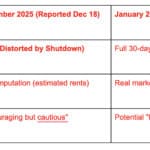Wall Street Journal
January 5, 2009
By JUSTIN LAHART
Anil Kashyap, University of Chicago Booth School of Business: Policy makers should stay focused on recapitalizing the banking system. The $350 billion of funds from the Troubled Asset Relief Program hasn't been sufficient to repair the balance sheets of financial institutions sitting on hundreds of billions, if not trillions, of dollars in losses. And financial firms won't start lending again until their balance sheets are in better shape. But bad banks should be shut down or nationalized more aggressively. "It is a complete waste of taxpayer money to bail out somebody who is insolvent," he says.
Jeremy Stein, Harvard: The government needs to aggressively audit banks, separating the insolvent from the solvent. The key underlying problem is the ad hoc bailouts that have taken place so far. That leaves market participants uncertain of the government's strategy "and therefore paralyzes potential private-sector investors," he says.
José Scheinkman, Princeton: After determining which banks are insolvent, the next step is figuring out what to do with them. "We have three options," he says. "You can merge them with good banks, invite foreign banks that are not so active in the U.S. to take control, or have the government nationalize them and clean them up. I suspect we will need all three."
Monday, January 5, 2009
Subscribe to:
Post Comments (Atom)



No comments:
Post a Comment